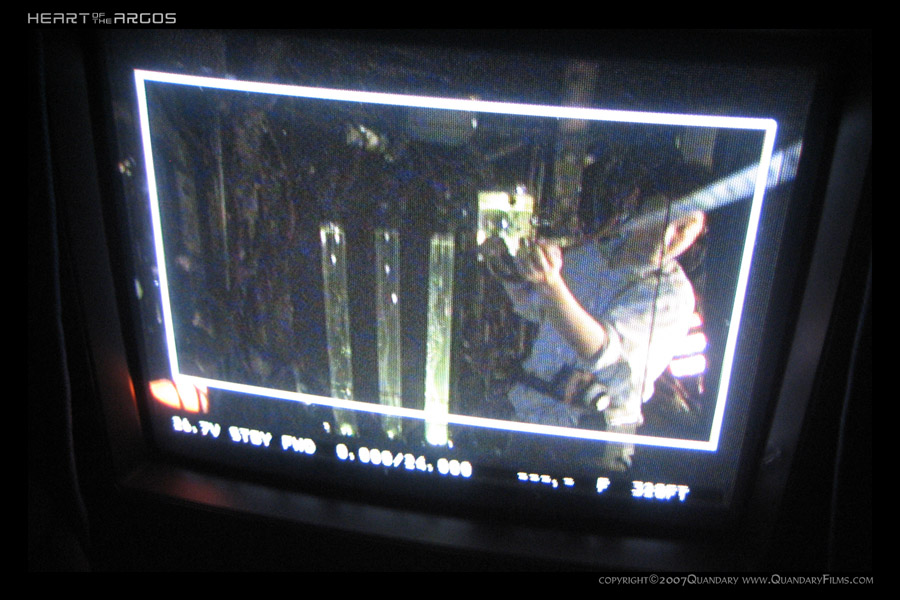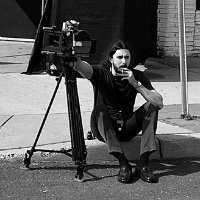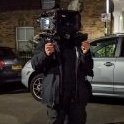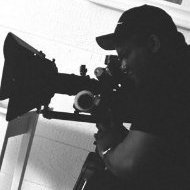-
Posts
4,560 -
Joined
-
Last visited
About Satsuki Murashige

- Birthday January 1
Profile Information
-
Occupation
Cinematographer
-
Location
San Francisco, CA
Contact Methods
-
Website URL
www.satsukimurashige.com
Recent Profile Visitors
-
Fumitaka Yamashita started following Satsuki Murashige
-

Book about film vs digital
Satsuki Murashige replied to Leonardo Gastel's topic in General Discussion
Karim, you seem to have a lot of strong opinions on what a DP’s job entails. Are you a DP yourself? If not, then your opinions are a bit like a guy telling his plumber what wrench he should be using because he has a subscription to American Plumbing magazine... It’s fine if you want to express opinions on your personal taste in lighting or lensing. But frankly, I think it’s ridiculous for you to lecture working DPs on how to do their jobs if you’ve never done the job yourself. Otherwise, you’re just parroting advice you’ve heard elsewhere, not from any personal experience. And it shows. -

Metric or Imperial focus marks?
Satsuki Murashige replied to Satsuki Murashige's topic in Camera Assistant / DIT & Gear
Thanks for the info Greg. Haha, no just curious. Was talking to the DZOFilm people about the lens markings on their new Vespid PL primes, they have Metric on the Operator side and Imperial on the Assistant side. I asked them if they could make a label to replicate the Imperial marks for the Operator side. There was a discussion about which was more common around the world in professional circles, and I assumed Metric. But thought I should double check, and now I’m glad I did! -

Book about film vs digital
Satsuki Murashige replied to Leonardo Gastel's topic in General Discussion
This is a pretty good analogy. Same thing for guitar amps, whether you are using a vintage Marshall JTM45 tube amp thru a specific cab with specific speakers thru a specific microphone, or a digital modeler direct into the computer. A great musician will make either sound great. But they won’t sound exactly the same, at least to those who know the difference. Is it good enough? That’s for each artist to decide for themselves. -
Dear international 1st ACs, Please enlighten me! I’m curious if your country and region uses cine lenses with Feet/Inches or Metric focus marks, or if there is mixed usage. Have there been any changes in the last few decades? Thanks!
-
Congrats Justin! Is that Jonathan Demme?
-
I’m not sure what you mean by ‘different’ CCT values, but 44-47 IRE sounds pretty accurate if the target for F-Log is 46 IRE. That would also indicate that the ISO calibration is accurate on your camera and should match the ISO values on your meter, which is great. Generally, a luminance (luma) waveform will be more accurate if the camera is white balanced to the light source because the RGB channels will be balanced. The RGB channels get averaged to display the luma signal, so depending on how far the color temperature is from neutral white balance, the IRE value may drift pretty far from 46%. For example, if you light the grey card with a cool blue color temperature, the red channel would be lower that 46 IRE and the blue channel will be higher. You can see this if you look at an RGB parade which shows the IRE values of each individual color channel.
-

Grad filters, Tony Scott
Satsuki Murashige replied to Dominik Bauch's topic in Camera Operating & Gear
Very true - ‘Revenge’, ‘True Romance’, ‘Crimson Tide’ (Dariusz Wolski) - beautiful looking movies. Two matte boxes - well, I guess at least you can afford the anamorphic lenses! Times have certainly changed in that regard. Just a few years ago, smaller rental houses couldn’t get a set of Hawks even if they had the money to pay for them. -
Based on some Googling, it seems the middle grey target for Fuji F-log is 46%. If you take readings of the white paper or your cat’s black fur, and set the camera and lens to those settings (and if your camera’s ISO is accurate) - then yes, they should come out at 46% on the waveform, or 18% grey. But then you have to decide if you want white or black objects to look grey? That’s where your interpretation of the meter reading comes into play. If you want the white paper to look white, then you have to expose it brighter. You could arbitrarily decide that it should be 2 stops over, or 4 stops. But you could be more consistent with your exposures if you first knew how bright the grey card was. Then you have a reference to compare the white paper to. I think the spot meter is more useful this way - having already set your base exposure, you can check how bright the windows are in the background, or how dark the shadows are, and adjust them if necessary.
-
That makes sense, since those objects are all different exposure values. So you should get different readings. The spot meter should be calibrated to 18% grey (Sekonic is notorious for calibrating to a different value in their meters, but that is a whole other topic). It assumes that you want to know what exposure to set in order to render the object you are metering at 18% grey on film. Therefore, if you are metering something other than an 18% grey card, your reading will require interpretation. Let’s say you light a scene with an 18% grey card and a white piece of paper. The grey card meters at f/5.6, 1/60sec, 800 ISO. You meter the white card, which reads at f/16. Then your black cat wanders over and sits on the white paper. You meter her fur at f/1.4. Is your meter broken? No - it’s telling you that your grey card will be exposed correctly at f/5.6, that the white paper is 3 stops over, and your black cat is 4 stops under. Which is fine, you want the paper to look white and your cat’s fur to look black. But if you didn’t meter the grey card first, you wouldn’t necessarily know that.
-
Yes, the electronic shutter still worked. You could only shoot stills in Live View mode. Of course, with the mirror removed there was no way see to an image otherwise. I think it is possible to put some PL lenses on an unmodified Canon DSLR with a straight adapter, but it really depends on the particular lens and camera model combination. I day-played once on a no-budget feature that Hiro Narita was shooting on a stock 7D with a PL to EF mount adapter. The lenses were Zeiss Compact Primes Mk1. I assume the AC before me had checked all of the lenses to make sure they cleared the 7D mirror shutter. We had no issues that day with clearance. My guess is that a lot of vintage wide angle PL prime lenses that have protruding rear elements would not have cleared the mirror or the internal housing. But it’s possible that more modern style lenses with rear elements flush to PL mount would clear. For example, I’ve used my Canon Compact Cine Zooms (which are easily switchable between PL and EF) on my stock 5D Mk3.
-

Cinematography and Makeup
Satsuki Murashige replied to Shrinivas Namdeo Gaikwad's topic in General Discussion
Yes, that’s true. I think OLPFs on cameras have also gotten better, particularly with Red and Blackmagic cameras. Sony cameras used to be really magenta as well, before Venice/FX series. The odd thing about those ‘green makeup’ days was that it was usually not visible to the eye. I had to call over the HMU to the monitor to see it. Haven’t had to do that since probably 2012 or so. -
There are a lot of variables that you have to account for when using light meters on digital cameras. 1. ISO calibration can vary widely on many cameras. It will also change depending on the camera picture profile or gamma settings. You should shoot tests with an 18% grey card, white card, and a waveform to see where middle grey actually lands with your chosen ISO vs what the meter says. For example, if you lit your grey card to f/4 and set T4 on the lens - middle grey is supposed to be at 41% (Sony S-Log 3) on the waveform and it’s reading at 30%, then you know the camera’s actual ‘ISO’ is lower. Open the lens until it reads 41%, and take note of how many stops you had to open up. This will be your calibration offset value for that camera and lens combination. If it’s a 2/3 stop difference, then your 800 ISO camera is actually 500 ISO, etc. Generally, cameras (and also film stocks) are not as sensitive as they claim to be on the box. ARRI Alexa is spot on, otherwise test and make sure. 2. What lens? If it’s not a T-stop calibrated lens, then you will be underexposing slightly due to loss of light thru the lens. When in doubt, you can open the f/stop on the lens by 1/3 of a stop or so to compensate. 3. Avoid stray light hitting the spot meter’s lens, shade it with your hand. Any lens flare will alter your readings. 4. When using a spot meter, the angle of the reading makes a huge difference. You can take readings before the camera is in place, but it’s a good idea to double check after the frame is up so you get a more precise reading from the exact angle. 5. A spot meter is just a tool, sometimes it’s useful and other times not. Depends on the situation. When shooting film, you have no other choice for precise reflected readings. With digital cameras, a waveform or false color will often be more precise. When in doubt, I would trust the waveform.
-

Cinematography and Makeup
Satsuki Murashige replied to Shrinivas Namdeo Gaikwad's topic in General Discussion
Very little, other than taking note of the occasional color cast problems between a particular brand of makeup and a particular camera sensor and LED lighting units. Just hire a great HMU person, really. They are experts at what they do for a reason. Haven’t seen the color cast thing in a long time, but there were issues with some of the earlier Red cameras rendering some foundation makeup green under certain types of LED lights. Don’t remember the specifics, but I haven’t noticed it in the last 5 years or so. I also don’t use a wide variety of LED lights regularly, so that maybe why I haven’t experienced it lately.













